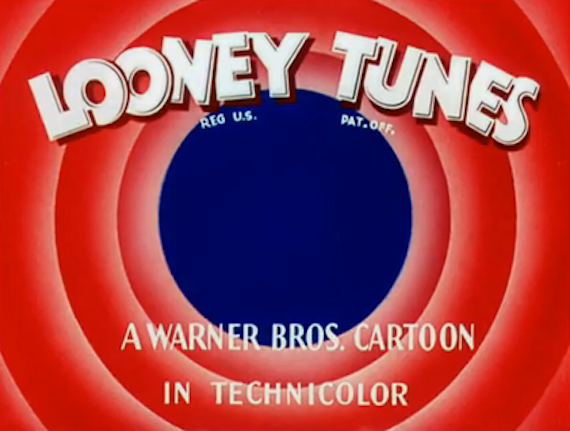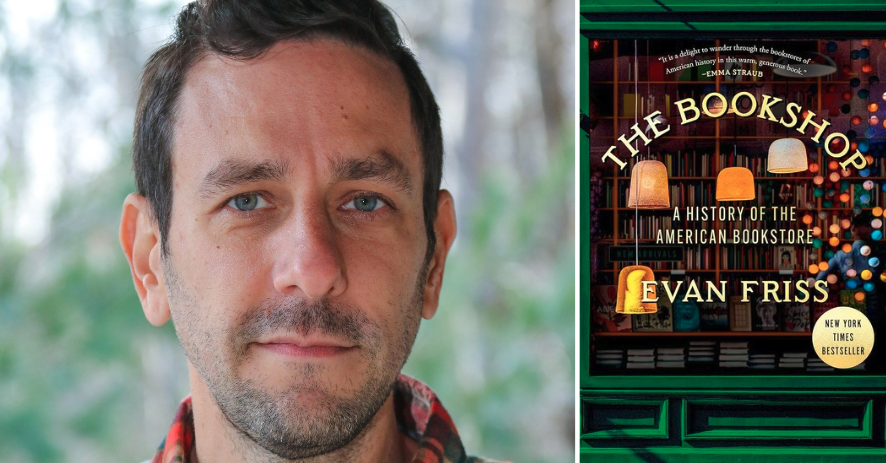
I recently bought a DVD set for my six-year-old son that featured the following offenses: reckless gunplay, the detonation of high explosives, apparent vehicular homicide, assault with a baseball bat, plunges from great heights, electrocutions, jailbreaks, punches, slaps, kicks, and shoves into oncoming traffic. For good measure, there was also a healthy dose of cross-dressing.
Perhaps unsurprisingly, my son has been transfixed by the gift: Looney Tunes Golden Collection: Vol. 1.
 There wasn’t much behind the purchase beyond the fact that I’d loved Looney Tunes as a child, and hoped that he might, too. Every Saturday morning, from 10 to 11, I sat before my parents’ balky Zenith to watch Bugs, Daffy, and the rest beat each other senseless with blithe and winking glee. As I watched the shorts with my son, I felt as if I’d last seen them just a few weeks before, not during the Reagan era. “Oh, man, wait ‘til you see what he does here,” I kept saying, just before some comically heinous act. When the deed was carried out — a push from a circus high-dive; a rifle-blast to the face — it happened exactly as I’d known it would.
There wasn’t much behind the purchase beyond the fact that I’d loved Looney Tunes as a child, and hoped that he might, too. Every Saturday morning, from 10 to 11, I sat before my parents’ balky Zenith to watch Bugs, Daffy, and the rest beat each other senseless with blithe and winking glee. As I watched the shorts with my son, I felt as if I’d last seen them just a few weeks before, not during the Reagan era. “Oh, man, wait ‘til you see what he does here,” I kept saying, just before some comically heinous act. When the deed was carried out — a push from a circus high-dive; a rifle-blast to the face — it happened exactly as I’d known it would.
As each episode concluded, I found myself struck by how smart the humor was, and how sharply it was delivered. The bulk of the shorts were made between 60 and 70 years ago, yet outside of the obvious markers — rotary telephones, daily milk delivery, cameras with flashbulbs — they hadn’t aged at all. Bugs Bunny’s quick wit, despite his Old Brooklyn accent, was as deft as ever. In the wake of this summer’s Confederate flag controversy, Yosemite Sam’s belligerence felt practically on-the-nose. And Pepe LePew’s pursuit of the white-striped feline was as squirm-inducing as anything from Seth MacFarlane or the South Park guys.
Why was I so surprised by Looney Tunes’s freshness? Most likely because, over the last few years, I’ve forgotten what cartoons can do. My son has come to favor shows like Chuck & Friends, Thomas and Friends, and Clifford the Big Red Dog. The programs are aggressively bland, crammed with supposed “lessons,” and so focused on the themes of teamwork and sharing that they border on the satirical. Whenever I walk through the room when my son has the TV on, I invariably hear a snippet of motivational-sounding talk delivered in a faux-uplifting tone.
On its face, such positivity seems an obvious good: Like most parents of six-year-old boys, I’ve spent much of his post-toddler life trying to get him to “play nice,” to view other children as more than mere beings intent on grabbing his toys — to not, in effect, act like he’s six years old. So if he wants to waste a half-hour with a TV show, why not let it be one that promotes behavior I’ve been campaigning for?
The answer lies in the reality that my desire for him to not “act like he’s six years old” is as likely to be fulfilled as my wish for him to win the 2036 Cy Young Award — a fact borne out by recent childhood-development research. A 2013 Harvard experiment showed that children can distinguish between “fair” and “unfair” — but don’t necessarily use that understanding to share with other kids. In the study, children were given stickers to keep, then asked how they would distribute them to their peers. As The Boston Globe’s Carolyn Johnson wrote at the time, “Children of all ages agreed that other children should split up the stickers evenly. But when it came to their own sharing, younger children were far more likely to keep more for themselves.” The sticker-hoarding subjects were “a bunch of self-aware hypocrites.”
As if such findings weren’t frustrating enough, there is evidence that, for young children, the concept of sharing can be almost neurologically impossible to grasp. One widely cited study from 2012, published in the journal Neuron, found that the area of the brain involved in impulse control was, unsurprisingly, more developed in adults than in children — suggesting that, in the words of LiveScience.com’s Linda Thrasybule, “selfish behavior in children may not be due to their inability to know ‘fair’ from ‘unfair,’ but rather an immature part of the brain that doesn’t support selfless behavior when tempted to act selfishly.” In other words, children’s brains must grow before they can share those treasured stickers.
None of this is to say that a child’s selfishness should be excused or tolerated — when your kid doesn’t want to share a tennis ball at the park, you can’t pat him on the head and tell the other parents that “recent studies prove it’s okay for my son to be a dick.” But if my lessons on kindness and sharing, repeated ad nauseam and delivered in increasing volume over a number of years, haven’t produced much effect, why would those lessons — delivered via Thomas’s sleepy narrator or a talking Tonka truck — have any effect either? And if those shows’ central message is doomed to fail due to the natural limitations of our children’s brains, what do the shows consist of? Beyond immobilizing a child so that you can have a cup of coffee, what point do they serve? My son’s collection of Thomas trains, $11.99 a pop, seems the most likely answer.
Ironically, it was distress over prefabricated, product-ready cartoons — cheap, noisy crap like He-Man and GoBots — that has brought us to this point. In the decades since the creation of Looney Tunes, a number of formal efforts, such as the Children’s Protection from Violent Programming Act, were undertaken to soften children’s programming. Though that bill ultimately died in the Senate in 2001 — like a coyote falling from a desert plateau, I am tempted to say — the Children’s Television Act, passed a decade before, was already bringing about an era of self-policing throughout the industry. As The New Yorker’s Emily Nussbaum wrote in 2012, “networks were [now] required to demonstrate that their programming slates included educational material — although what was ‘good for children’ was not necessarily the same as ‘good.’ In 1992, that big purple optimist Barney became a hit.” Today, it seems that children’s programming has split into two camps: absurdist fare such as SpongeBob SquarePants and The Amazing World of Gumball — which hold their baffled young viewers’ attention through a blend of color and speed — and treacly post-Barney pap like Thomas and Chuck & Friends.
In this climate, it’s difficult to imagine something as smartly anarchic — and yes, as violent — as Looney Tunes ever being green-lit. (Even Wabbit, a Looney Tunes reboot that recently premiered on Cartoon Network, is surprisingly strained, a combination of mediocre animation and dutiful homage.) This is unfortunate, because when I observe my son as he watches a Bugs Bunny cartoon — wide-eyed and tickled, forever on the edge of laughter — I see a real engagement there, the inverse of his Thomas-induced stupor. And far from being mindless “Itchy and Scratchy” mayhem, something to legislate against, Looney Tunes had genuine lessons — likely unintentional, but clearly there — embedded in each short. They taught that intelligence was more important than aggression, as Bugs outwitted Yosemite Sam and Tweety Bird outwitted Sylvester, time and time again. Through Pepe LePew, they conveyed the stupidity of lust; with Wile E. Coyote, they showed that pure desire sometimes wasn’t enough to obtain the thing you want.
Unlike contemporary cartoons, Looney Tunes didn’t have a thing to say about teamwork or caring or sharing; on the contrary, its characters nearly always acted alone. Is Bugs Bunny teaching my son to be independent any more than Thomas the Tank Engine is teaching him to be a better kid? That I can’t say for sure. But at least while he’s watching Bugs Bunny, we can share a genuine laugh.








